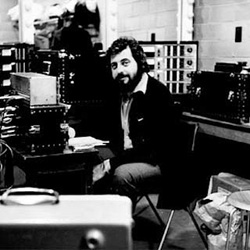By now you’ve all heard that the legendary producer Phil Ramone has passed. If you read any of the obituaries, you’ll notice that they all quote his many Grammys and the superstars he worked with, which indeed placed him above the majority of his contemporaries.
Phil was more than that though. He was a behind-the-scenes mover and shaker on the technical side as well, always eager to embrace new technology.
Phil started as a musician (piano and violin), but before long became interested in the technical aspects of making music, and became a Grammy-winning engineer (with the groundbreaking bossa nova record Getz/Gilberto in 1964). He soon opened up A&R Studios in New York, which for years was one of the premier indie facilities on the East Coast and a place where a host of engineering legends got their start (Elliot Scheiner, Shelly Yakus, Don Hahn, Roy Cicala, to name a few). Just to show how into the tech side of things Phil was, he personally tuned his plate reverbs, and they became part of the signature sound of the studio and a big reason why people wanted to work there.
In 1966 Phil made the decision to install the first solid-state console in a mainline studio, then he was always the first to use any version of Dolby that they released. He was the first to use an early version of what today is an ISDN line to record an artist from a different location, and one of the first to eagerly switch to digital tape machines when they became available.
As if that wasn’t enough, he was the first producer to embrace the CD, with Billy Joel’s 52nd Street (named after the location of A&R) becoming the first commercially available release in that format.
Phil was an engineer with big technical chops, and he never was afraid to get down in the dirt of engineering if he had to, despite being one of the most successful producers ever. And he was never afraid to try something new if he thought that it might help the final product in any way.
I never worked with Phil, but I did get a chance to spend a full week with him on a Caribbean “Home Theater” cruise in 2003 where we were both speaking on the same panel. The entire week was nothing but great stories from him and Al Schmitt day and night. One of the best was about Howard Stern’s father, who was actually the maintenance engineer at A&R for a time. For as loud and boisterous as Howard is, apparently his father was as quiet as a church mouse, mostly seen and never heard. Of course, the stories about the music mafia were priceless (probably best left unprinted).
Perhaps the best of my memories with him is of just he and I watching a Monday Night Football game together in the lounge one night as we sailed just off the coast of Cuba. He was a regular guy, and as into sports as any Joe Sixpack.
I had always hoped I’d get the chance to hang with Phil more and really felt that it would happen someday, but alas, that’s not to be, at least in this lifetime. Pleasant journeys, my friend. You were a giant in the music business in so many ways.
Bobby Owsinski is an author, producer, music industry veteran and technical consultant who has written numerous books covering all aspects of audio recording. For more information be sure to check out his website and blog.
















